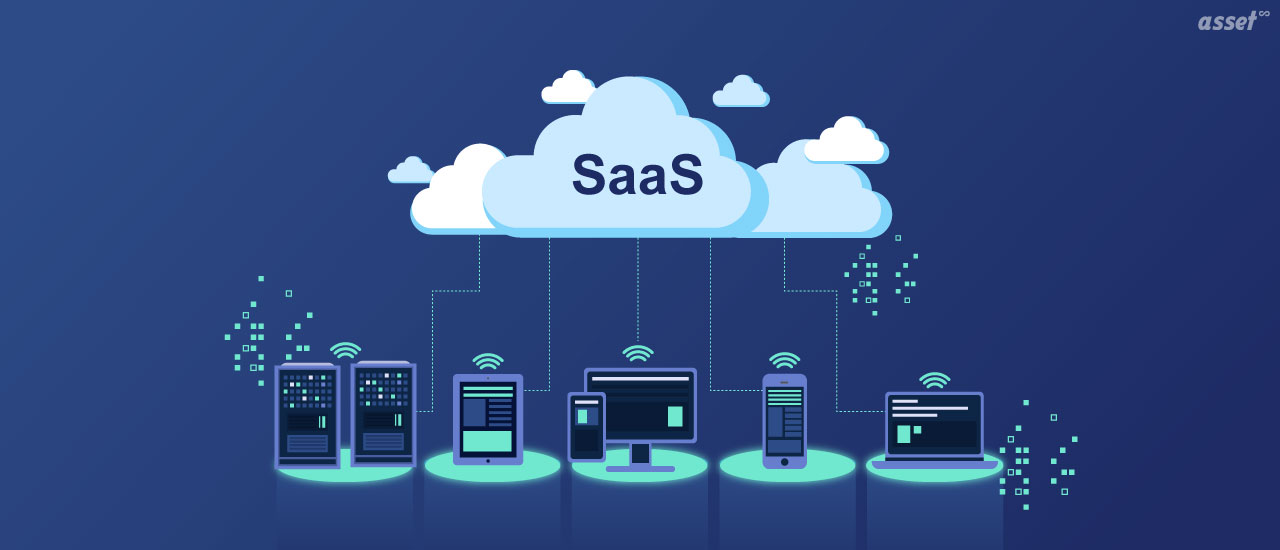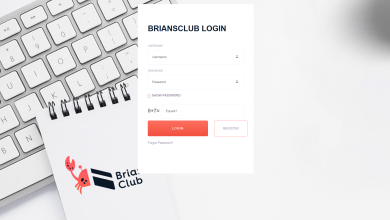In the ever-evolving landscape of modern business, cloud-based SaaS solutions have emerged as indispensable tools for organizations of all sizes. SaaS, or Software as a Service, is a model where software applications are delivered over the internet on a subscription basis. This approach offers a myriad of benefits, and in this discussion, we will delve into the compelling reasons why cloud-based SaaS solutions have gained popularity and how they are transforming the way businesses operate.
Cost Efficiency
One of the most apparent advantages of cloud-based SaaS solutions is cost efficiency. Traditional software deployment often necessitates significant upfront expenses. Licenses, hardware, and maintenance costs can quickly accumulate. In contrast, SaaS solutions operate on a subscription-based model, enabling businesses to pay only for the services they use.
By spreading costs over time, companies can allocate resources more effectively. Furthermore, updates and maintenance are handled by the SaaS provider, reducing the need for in-house IT expertise. This cost-saving aspect has made SaaS solutions attractive to both startups and established enterprises.
Scalability
Scalability is a pivotal factor in today’s dynamic business environment. Cloud-based SaaS solutions are designed to be scalable, allowing organizations to adapt to fluctuating demands seamlessly. Whether a company needs to add more users, increase storage, or access additional features, SaaS providers make scaling up or down a straightforward process.
This scalability aligns with an organization’s growth trajectory. Startups can begin with a minimal setup and expand as they gain momentum. Larger enterprises can swiftly accommodate spikes in usage or downsizing as needed. The flexibility offered by SaaS solutions is a game-changer for businesses, as it ensures that resources are always aligned with operational requirements.
Accessibility and Collaboration
In the digital age, the ability to access data and applications from anywhere is a game-changer. Cloud-based SaaS solutions provide this flexibility, enabling users to work remotely or access crucial resources while on the go. This accessibility enhances productivity and facilitates remote collaboration, a crucial aspect in today’s interconnected world.
Teams can collaborate in real-time, share documents, and communicate effortlessly, regardless of their physical locations. The seamless integration of cloud-based SaaS solutions promotes cross-functional cooperation, ultimately driving innovation and efficiency.
Automatic Updates
SaaS solutions eliminate the hassle of manual software updates. Unlike traditional software, where updates require time and effort from IT teams, SaaS providers handle these updates automatically. This means businesses always have access to the latest features and security patches without any additional cost or effort.
Automatic updates also enhance security. Cyber threats are continually evolving, and SaaS providers are vigilant in addressing vulnerabilities. By keeping software up to date, companies can significantly reduce the risk of security breaches.
- Security and Data Protection
Cloud-based SaaS solutions invest heavily in robust security measures. Data breaches can be catastrophic, causing not only financial losses but also damage to a company’s reputation. SaaS providers employ dedicated security teams, encryption protocols, and secure data centers to protect sensitive information.
In addition, data backup and recovery options are typically part of the service package. This ensures that data loss due to unforeseen events, such as hardware failures or natural disasters, is minimized. Companies can rest easy knowing their critical data is safeguarded.
- Reduced Hardware Requirements
Traditional software often demands powerful hardware to run efficiently. This can be a significant expense, especially for smaller businesses. Cloud-based SaaS solutions, on the other hand, offload most of the processing and storage to their servers, reducing the need for high-end, on-premises hardware.
This reduction in hardware requirements not only saves money but also contributes to a smaller carbon footprint. With fewer on-site servers, businesses can minimize their energy consumption, making it a greener choice as well.
- Integration Capabilities
Integration is crucial for modern businesses that rely on multiple software applications. Cloud-based SaaS solutions excel in this aspect by offering extensive integration capabilities. They can seamlessly connect with other software, databases, and systems to create a unified and efficient workflow.
This integration simplifies data sharing and reduces duplication of efforts. Companies can leverage the power of various tools without the headache of managing disparate systems. This flexibility is especially valuable for businesses with complex operational needs.
- Predictable Costs
SaaS solutions offer predictable, subscription-based costs, making it easier for businesses to budget effectively. With fixed monthly or annual fees, companies can plan their expenditures with precision, without being blindsided by unexpected expenses.
This financial predictability is particularly valuable in turbulent economic times. It allows companies to maintain stability and allocate resources wisely. Knowing what to expect in terms of costs enables organizations to make informed decisions about resource allocation.
- Rapid Deployment
Traditional software deployment can be a time-consuming process. It often involves procuring hardware, installing software, and configuring settings, which may take weeks or even months. Cloud-based SaaS solutions, in contrast, can be implemented rapidly.
With just an internet connection and subscription, businesses can start using the software almost immediately. This swift deployment ensures that organizations can respond quickly to changing business needs, keeping them competitive in a fast-paced market.
- Support and Maintenance
SaaS providers offer dedicated customer support and maintenance services. This means that businesses can rely on expert help when needed. Whether it’s troubleshooting technical issues, customizing the software, or addressing user concerns, SaaS providers have teams in place to assist.
This support reduces the burden on in-house IT teams, allowing them to focus on more strategic initiatives. It also ensures that businesses can resolve any software-related problems promptly, minimizing disruptions.
- Competitive Advantage
In today’s competitive landscape, businesses need every advantage they can get. Cloud-based SaaS solutions provide a level playing field by granting access to advanced tools and technologies. Smaller companies can compete with larger counterparts by utilizing the same software and features.
Moreover, SaaS solutions often have a community of users who share best practices and insights. This knowledge-sharing can be invaluable in gaining a competitive edge in the market.
- Regulatory Compliance
Adhering to industry regulations and compliance standards is a non-negotiable aspect for many businesses. SaaS providers understand this and invest in ensuring their solutions meet the necessary compliance requirements.
By choosing a reputable SaaS provider, companies can rest assured that their software is designed with compliance in mind. This can save organizations a considerable amount of time and effort in achieving and maintaining compliance.
- Disaster Recovery
Disasters can strike at any moment, whether in the form of a cyberattack, a natural catastrophe, or simple hardware failures. SaaS solutions often include robust disaster recovery features, allowing businesses to quickly resume operations in the face of adversity.
These solutions typically back up data in geographically diverse locations, ensuring data integrity and availability. In the event of a crisis, organizations can continue their operations with minimal downtime, safeguarding their business continuity.
- User-Friendly Interfaces
Usability is a key factor in software adoption. Cloud-based SaaS solutions are known for their user-friendly interfaces. They are designed with the end user in mind, ensuring that employees can quickly adapt to the software and make the most of its features.
This ease of use reduces the learning curve and training requirements, ultimately enhancing productivity. Employees can start using the software efficiently without extensive training.
- Vendor Management
Managing software vendors can be a complex and time-consuming task. With traditional software, businesses must coordinate with multiple vendors for licenses, maintenance, and updates. SaaS solutions simplify this by consolidating vendor management.
A single SaaS provider offers all the necessary services, streamlining the vendor relationship and reducing administrative overhead. This makes it easier for businesses to track expenses and maintain a clear overview of their software ecosystem.
- Mobile Compatibility
In today’s mobile-centric world, the ability to work on smartphones and tablets is crucial. Cloud-based SaaS solutions are designed to be mobile-compatible, ensuring that users can access their applications and data on the go.
This mobile flexibility empowers employees to be productive even when they are not at their desks. It is a valuable feature for field workers, sales teams, and anyone who needs to stay connected while on the move.
- Performance Optimization
SaaS providers are dedicated to optimizing the performance of their software. They monitor usage patterns and continually work to improve speed and reliability. This focus on performance ensures that businesses can rely on their SaaS applications without interruption.
With performance optimization, companies can maintain high productivity levels, even during peak usage periods. This is especially important for businesses that operate in a 24/7 environment.
- Data Analytics
Data is the lifeblood of modern business. SaaS solutions often come with built-in analytics and reporting tools that allow organizations to gain insights from their data. These analytics capabilities empower businesses to make data-driven decisions.
Whether it’s tracking sales trends, monitoring customer behavior, or evaluating operational efficiency, SaaS analytics tools provide the means to extract valuable information from the data.
- Customization
SaaS solutions typically offer a degree of customization to meet specific business needs. Companies can tailor the software to match their workflows, preferences, and branding. This flexibility allows for a more personalized user experience.
Customization is particularly valuable for businesses with unique processes or requirements. It ensures that the software aligns perfectly with their operational needs.
- Business Continuity Planning
Business continuity is a priority for organizations. SaaS solutions contribute to this by providing options for data backup, failover, and redundancy. These features are integral to creating a comprehensive business continuity plan.
In the event of unforeseen disruptions, businesses can seamlessly switch to backup data centers or failover systems, ensuring that they continue to operate without significant downtime.
- Subscription Management
SaaS solutions come with built-in subscription management tools. This simplifies the process of adding or removing users, adjusting service levels, and managing billing. Companies can easily control their subscriptions, making it a hassle-free experience.
Subscription management tools also provide transparency into usage, helping businesses make informed decisions about resource allocation.
- Collaboration Features
Collaboration is a cornerstone of modern work culture. SaaS solutions are equipped with collaboration features, such as real-time document sharing, group chat, and project management tools. These features facilitate teamwork and streamline communication.
Collaboration capabilities are especially vital for remote teams and companies with distributed workforces. They bridge the gap between physical distances and ensure that projects progress smoothly.
- Environmental Responsibility
Environmental sustainability is a growing concern in today’s world. Cloud-based SaaS solutions contribute to environmental responsibility by reducing the need for on-site hardware and energy consumption. By sharing resources in data centers, they minimize the carbon footprint associated with IT infrastructure.
This eco-friendly aspect aligns with the values of businesses committed to sustainability and can be a selling point for environmentally conscious consumers.
- User Training and Support
SaaS providers often offer comprehensive user training and support resources. These resources can include tutorials, documentation, webinars, and forums. They help users become proficient with the software quickly and efficiently.
User training and support are critical for maximizing the benefits of SaaS solutions. By investing in user education, businesses ensure that employees are using the software to its full potential.
- Data Ownership
One concern often raised about cloud-based solutions is data ownership. Businesses worry about who has control over their data. It’s essential to clarify this issue in the service agreement with the SaaS provider.
In most cases, businesses retain ownership of their data while granting the provider the necessary permissions to operate the software. It’s crucial for organizations to understand their rights and responsibilities regarding data.
- Vendor Reputation
The reputation of the SaaS provider is a significant factor in the decision-making process. Businesses should research and choose reputable providers with a history of reliability and security. A trusted vendor is more likely to deliver on their promises.
A provider’s reputation is often reflected in user reviews and industry awards. Businesses can use this information to assess the reliability and performance of a SaaS solution.
Data Migration
Transitioning to a SaaS solution often involves migrating data from existing systems. SaaS providers usually offer tools and services to simplify this process. However, businesses should plan data migration carefully to avoid disruptions.
Data migration requires a clear strategy to ensure that essential data is transferred accurately and securely. This planning is crucial to a smooth transition to a SaaS solution.
Data Backup and Recovery
Data loss is a nightmare for businesses. SaaS solutions typically include data backup and recovery features, but businesses should understand how these work and how to access their data in case of emergencies.
Having a robust data backup and recovery plan in place is essential. It ensures that data can be quickly restored in case of accidental deletions, system failures, or data corruption.
Service-Level Agreements (SLAs)
Service-level agreements are a critical aspect of SaaS contracts. These agreements define the level of service that the provider commits to deliver. Businesses should review SLAs carefully to ensure they align with their operational needs.
SLAs typically cover aspects like uptime, performance, support response times, and data availability. Understanding these commitments is essential for holding the provider accountable.
- Exit Strategy
Planning for the end of the contract is as crucial as selecting the right SaaS solution. Businesses should have an exit strategy in place, outlining how they will retrieve their data and transition to a new system if needed.
This strategy ensures that businesses can switch to another solution smoothly if their needs change or if they encounter issues with the current provider.
Conclusion
Cloud-based SaaS solutions have revolutionized the way businesses operate, offering a myriad of advantages. From cost efficiency and scalability to accessibility and collaboration, these solutions provide a foundation for growth and innovation. They reduce hardware requirements, enhance security, and simplify integration, making them a vital component of modern business technology.
SaaS solutions offer predictable costs, rapid deployment, and extensive support. They provide a competitive advantage, ensuring regulatory compliance, and addressing disaster recovery needs. Usability, performance optimization, and data analytics enhance the user experience. Customization and subscription management empower businesses to adapt to their unique needs.
SaaS solutions contribute to business continuity planning and offer a range of collaboration features. They align with environmental responsibility and provide robust user training and support. Data ownership, vendor reputation, and data migration are crucial considerations. Data backup and recovery, service-level agreements, and exit strategies should be part of the evaluation process.
As businesses continue to navigate the complex landscape of technology and competition, cloud-based SaaS solutions are likely to remain a pivotal tool in their arsenal. With their diverse benefits and continuous innovation, they empower organizations to thrive in the digital age. By understanding these advantages and carefully evaluating providers, businesses can harness the full potential of cloud-based SaaS solutions and propel themselves skyward in the modern business world.





